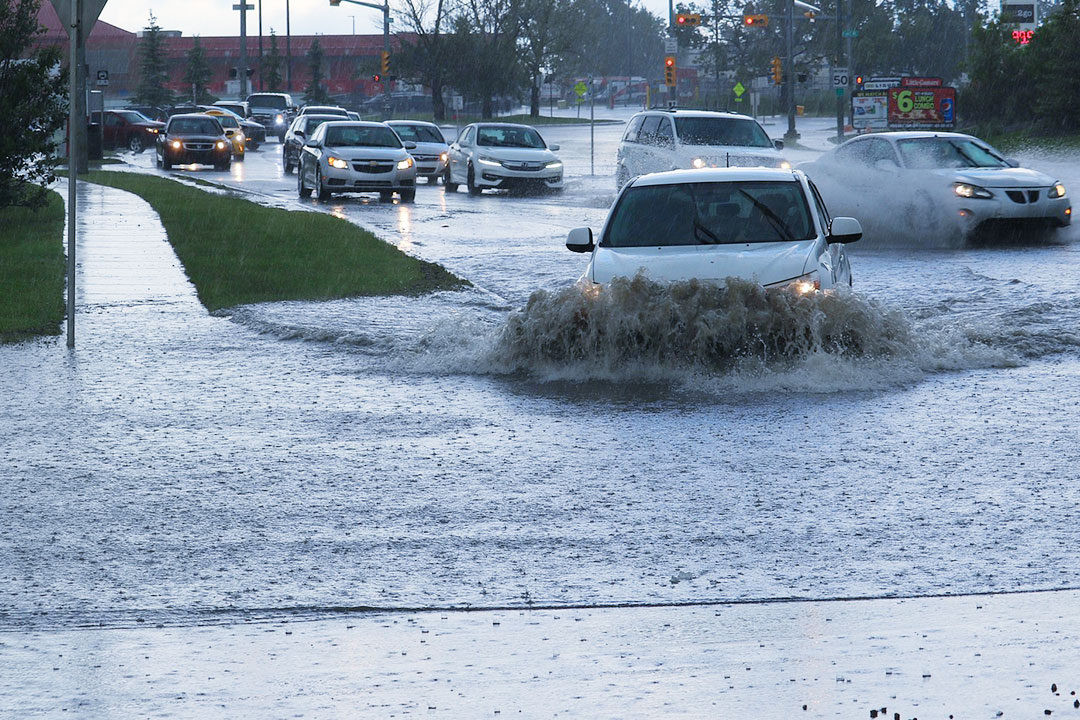Surviving A Flash Flood Emergency: Essential Tips And Advice

Table of Contents
Flash floods are sudden, dangerous events that can strike with little warning, turning familiar streets into raging rivers. Understanding how to prepare for and survive a flash flood emergency is crucial for your safety and the safety of your loved ones. This comprehensive guide provides essential tips and advice to help you navigate these perilous situations.
Understanding Flash Flood Risks and Warning Signs
Identifying High-Risk Areas
Flash floods are most common in specific geographical locations. Identifying high-risk areas near your home is the first step in preparedness.
- Areas near mountains and canyons: Steep slopes funnel water quickly into low-lying areas, leading to rapid water accumulation.
- Dry washes and arroyos: These seemingly innocuous channels can become raging torrents during heavy rainfall.
- Areas with inadequate drainage systems: Poorly maintained or insufficient drainage infrastructure increases the risk of flooding.
- Low-lying areas near rivers and streams: These areas are naturally susceptible to overflow during periods of intense rainfall.
Understanding your local geography and identifying these risk factors using maps from your local government or the USGS (United States Geological Survey) is vital.
Recognizing Warning Signs
Recognizing the warning signs of an impending flash flood can save precious time and potentially your life.
- Heavy or persistent rainfall: Prolonged or unusually intense rainfall is a major indicator.
- Rapidly rising water levels in rivers, streams, or creeks: A noticeable increase in water levels within a short period is a serious warning.
- Overflowing rivers and streams: Water exceeding the banks is a clear sign of imminent danger.
- Official weather alerts and warnings: Heed all warnings issued by national weather services and local authorities. These alerts should be taken very seriously. Sirens and emergency alerts on your phone are critical to pay attention to.
Pre-Flash Flood Preparedness: Building Your Safety Plan
Developing an Emergency Plan
A well-defined emergency plan is crucial for a successful flash flood response.
- Family communication plan: Establish a designated meeting point outside your home and ensure everyone knows how to contact each other in case of separation.
- Evacuation route: Identify multiple evacuation routes, including alternative paths in case primary routes are flooded.
- Emergency kit: Prepare a kit with essential supplies, including water (at least one gallon per person per day), non-perishable food, a first-aid kit, flashlights, batteries, a whistle, important documents (in waterproof containers), and medications.
- Notify authorities: Inform local authorities of your location and planned evacuation route.
Regularly review and practice your emergency plan to ensure everyone knows what to do in the event of a flash flood.
Protecting Your Property
Taking proactive steps to protect your property can minimize damage.
- Elevate valuable items: Move important documents, electronics, and furniture to higher ground.
- Move vehicles to higher ground: Park your vehicles in a safe location, away from potential flood zones.
- Secure loose items: Secure any outdoor objects that could be swept away by floodwaters.
- Flood insurance: Consider purchasing flood insurance to mitigate financial losses in case of a severe flash flood.
Action During a Flash Flood: Immediate Safety Measures
Evacuating Safely
Immediate evacuation is paramount upon receiving a flash flood warning.
- Avoid flooded areas: Never attempt to drive or walk through floodwaters. The depth and current can be deceiving and deadly.
- Follow evacuation routes: Utilize designated evacuation routes to reach higher ground.
- Seek higher ground immediately: The higher you are, the safer you are. Move to a higher floor in your home or seek elevated shelter.
Remember that even a few inches of fast-moving water can knock a person off their feet.
Seeking Shelter
If evacuation is impossible, seek safe shelter within your home.
- Go to the highest level of your building: If you're in a multi-story building, move to the highest floor.
- Move to a strong interior room: Avoid windows and doors, choosing an interior room on the upper floors.
- Stay informed: Continuously monitor weather updates and official communications for further instructions.
Remain vigilant and continue monitoring the situation.
Post-Flash Flood Recovery: Assessing Damage and Seeking Help
Assessing the Damage
After the flood subsides, assess the damage carefully, prioritizing safety.
- Check for structural damage: Carefully inspect your home for structural damage, paying attention to cracks, weakened foundations, and electrical hazards.
- Beware of contaminated water: Floodwater can be contaminated with sewage and hazardous materials. Avoid contact.
- Document the damage: Take photos and videos of the damage for insurance claims.
Never enter a flooded building without professional assessment; electrical hazards and unstable structures are common dangers.
Seeking Assistance
Contact emergency services and relevant agencies for assistance.
- Emergency services: Dial your local emergency number immediately for rescue or medical assistance.
- FEMA (Federal Emergency Management Agency) or similar organizations: Contact FEMA or your equivalent national disaster relief agency to apply for aid and support.
- Insurance company: Contact your insurance company to file a claim for flood-related damage.
Document all communication and keep records of all expenses related to recovery.
Conclusion
Surviving a flash flood requires preparedness, swift action, and a sound understanding of the risks involved. By following the tips and advice outlined in this guide, you can significantly increase your chances of staying safe and minimizing potential damage. Don't wait for a flash flood to strike. Take the necessary steps now to prepare your family and home. Learn more about flash flood safety and create your emergency plan today to effectively prepare for a flash flood emergency and mitigate the risks of flash flood damage.

Featured Posts
-
 Carlos Alcaraz Aryna Sabalenka Begin Italian Open With Victories
May 25, 2025
Carlos Alcaraz Aryna Sabalenka Begin Italian Open With Victories
May 25, 2025 -
 Fathers Desperate Rowing For Sons 2 2 Million Treatment A Cnn Story
May 25, 2025
Fathers Desperate Rowing For Sons 2 2 Million Treatment A Cnn Story
May 25, 2025 -
 I O Versus Io Analyzing The Rivalry Between Google And Open Ai
May 25, 2025
I O Versus Io Analyzing The Rivalry Between Google And Open Ai
May 25, 2025 -
 Canadian Screen Awards Kiefer Sutherlands Tribute To His Father
May 25, 2025
Canadian Screen Awards Kiefer Sutherlands Tribute To His Father
May 25, 2025 -
 Jymypaukku Muhii Tuukka Taponen F1 Autossa Jo Taenae Vuonna
May 25, 2025
Jymypaukku Muhii Tuukka Taponen F1 Autossa Jo Taenae Vuonna
May 25, 2025
Latest Posts
-
 Get Ready The Louisiana Horror Film Sinners Is Coming To Theaters
May 26, 2025
Get Ready The Louisiana Horror Film Sinners Is Coming To Theaters
May 26, 2025 -
 New Horror Movie Sinners Filmed In Louisiana Release Date Revealed
May 26, 2025
New Horror Movie Sinners Filmed In Louisiana Release Date Revealed
May 26, 2025 -
 Get Ready Horror Movie Sinners Filmed In Louisiana Premieres Soon
May 26, 2025
Get Ready Horror Movie Sinners Filmed In Louisiana Premieres Soon
May 26, 2025 -
 Sinners A Louisiana Filmed Horror Movie Coming To Theaters
May 26, 2025
Sinners A Louisiana Filmed Horror Movie Coming To Theaters
May 26, 2025 -
 Best Office Chairs 2025 For Home And Office Use
May 26, 2025
Best Office Chairs 2025 For Home And Office Use
May 26, 2025
